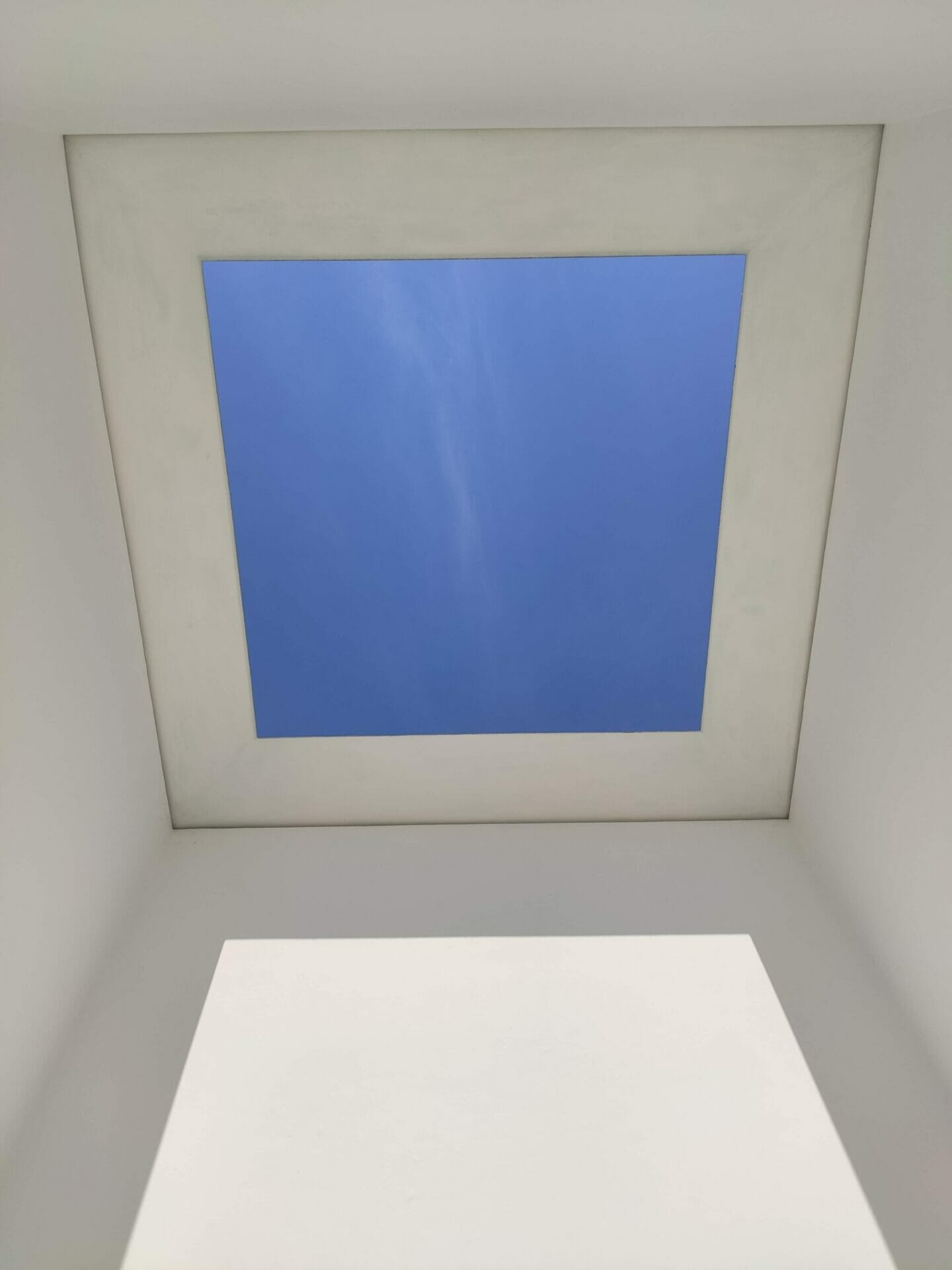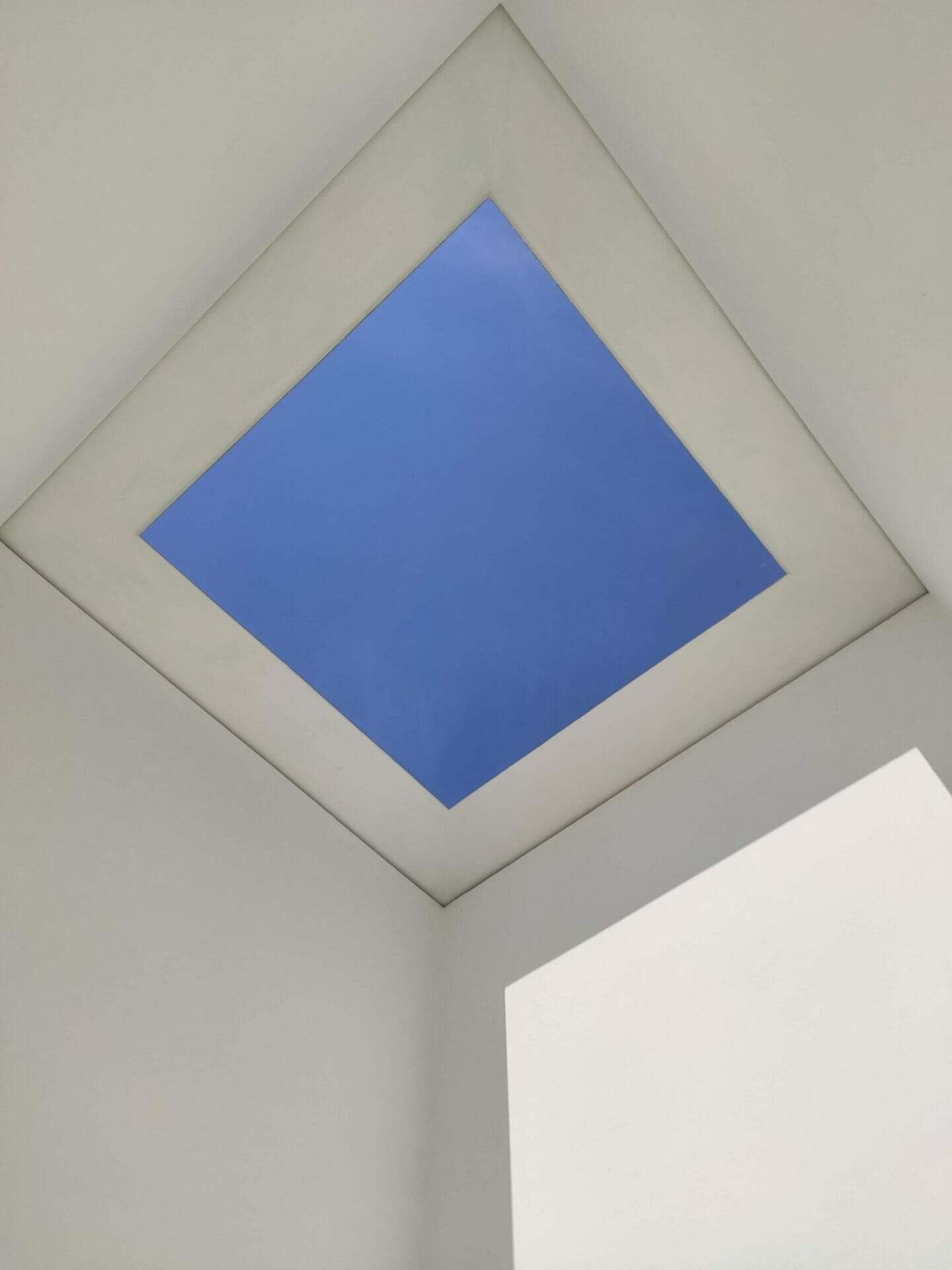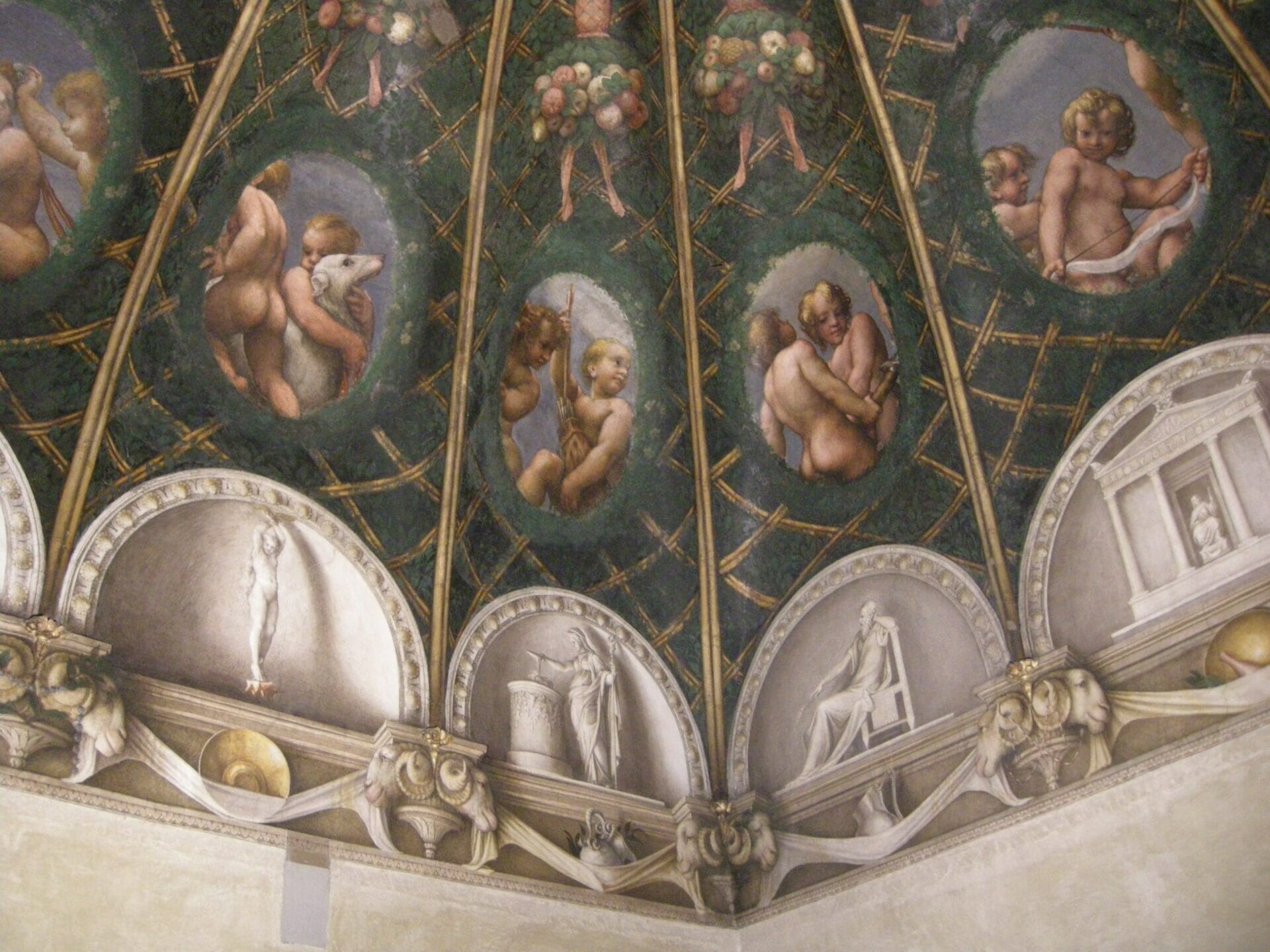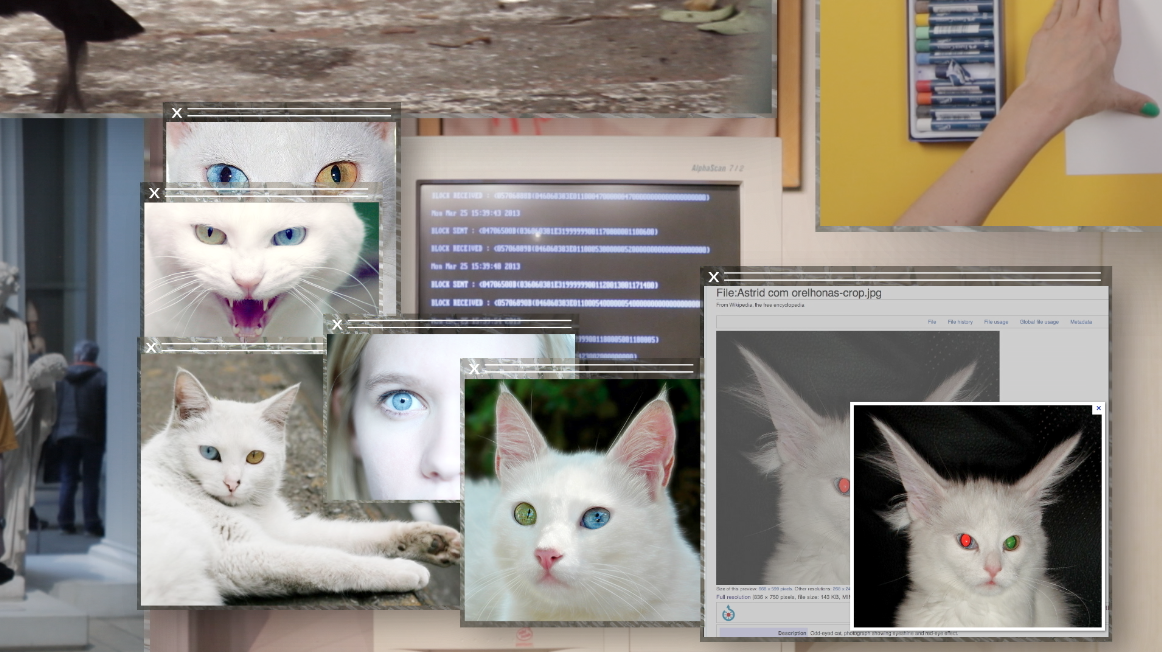
Skyspace-1 | An experience of sensory awareness
Artist
Year
Country
Format
Material/Technique
By
Walking into the room in Villa Panza, where James Turrell’s Skyspace-1 lies, is an experience of sensory awareness. Light completely surrounds the viewer as they silently cross the empty room. This light’s source is an unexpected window opening onto the sky. Nothing simpler. However, for however trivial it can seemingly be, the experience is uplifting.
James Turrell is a living artist based in California. His artworks focus on perception and light and concern the relationship between man and the natural environment. Although he mostly produced his artworks in the 1980s, his upcoming project Roden Crater is expected to become one of the most imponent pieces of land art in existence.
Skyspaces
Turrell’s Skyspaces revolve around the presence of two key elements: light and space. Indeed, Turrel’s series of artworks are apertures of various geometrical shapes that, in a close ambiance, show a portion of the outside world. These windows can be in an already existing space, like Villa Panza’s Skyspace-1. Alternatively, Turrell designs these ambiances from scratch. An instance of this is his 2005 work Piz Uter in Zuoz, Switzerland. The artist’s intervention is simple: to open up a space where the spectator experiences an ordinary view – like that of the blue sky – in non-ordinary circumstances.

Author’s photograph.
Light and Space Movement
Turrell was a member of the Light and Space movement. This consisted of a number of loosely affiliated artists from California who, during the 1960s, started to experiment with a type of installation art strongly linked to light and its perception. The Light and Space movement was seen as the West coast response to Minimalism. Indeed, Light and Space’s focus on the object’s physical features was conceptually tied to the Minimalist movement.
However, Turrell’s example bears witness to the impulse towards transcendence that the California-based movement involved. Moreover, thanks to the developments in space engineering taking place in California, where most of the NASA industries were based, artists could exploit new materials for their pieces of installation art. These were, for instance, particular plastics that mirrored light or translucent and highly flexible materials. Famously, the movement reminds viewers of the immense spaces of southern California and its sensuous colors.

Author’s photograph.
An experience of sensory awareness
Turrell claims that light is a highly significant element on its own. Therefore, his artistic inquiry focuses on light and investigates its role in visual perception. He exploits a psychological effect named ganzfeld. The ganzfeld effect indicates a state occurring when the subject is exposed to a uniform field of stimulation and goes into a hallucinatory state. Turrell, in his installations, works with this effect by exposing viewers to fields of uniform light. By removing sensory stimuli such as noises or shapes, the artist brings the viewer into a state of meditation.
Indeed, focusing intensely on the perception of light, the viewer becomes self-conscious of his sensory perception. This turns Turrell’s installations into a space that enhances the viewer’s sensory awareness. Therefore, the usual relationship between viewer and artwork changes as the focus becomes the viewer’s experience of their body.
The attentiveness towards sensory experience is shared among the majority of artists belonging to the Light and Space movement such as Rober Irwin, Peter Alexander, and Larry Bell. Although the Light and Space experience is closer to minimalism, it can nonetheless be linked with the growth of performance art during the 1970s. As passive contemplation gave way to active participation in performance art, other movements started to focus on the viewer’s experience of artistic objects.
The physical and emotional involvement that brings the viewer into a transcendental experience is present in Turrell’s works but also in the works by Mark Rothko (No. 16 (Red, Brown, and Black), 1958), Anish Kapoor (Descent into Limbo, 1992), or in the music by Arvo Pärt (Cecilia, vergine romana) and Philip Glass (Solo Piano).
James Turrell’s Skyspace-1 is an artwork that challenges the viewer’s sensorial coordinates turning the aesthetic experience into an immersive voyage triggering sensory awareness.











